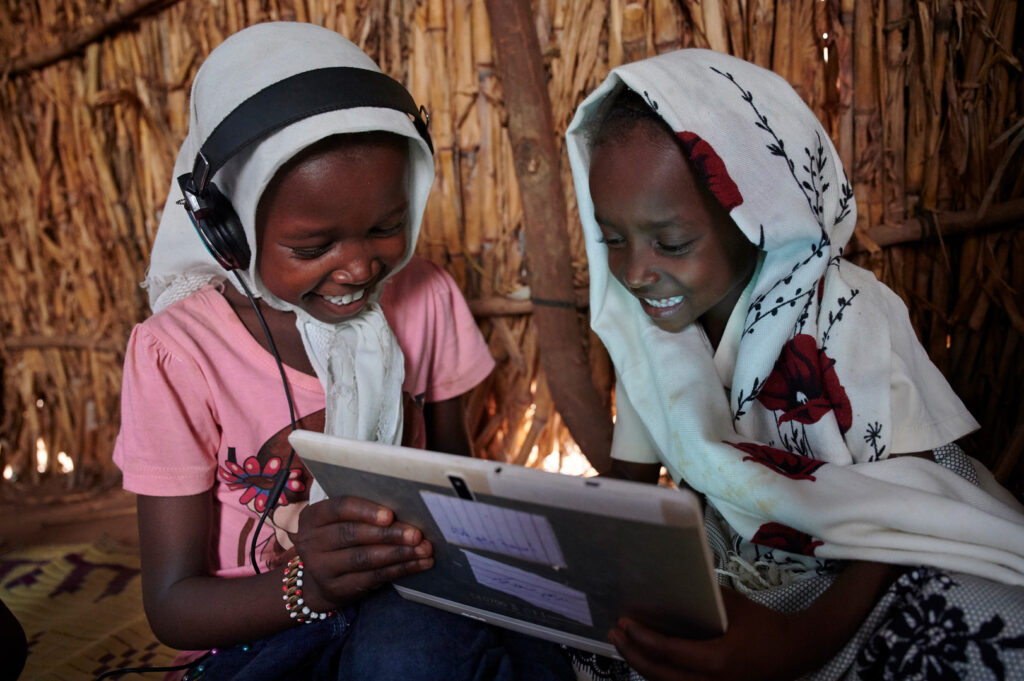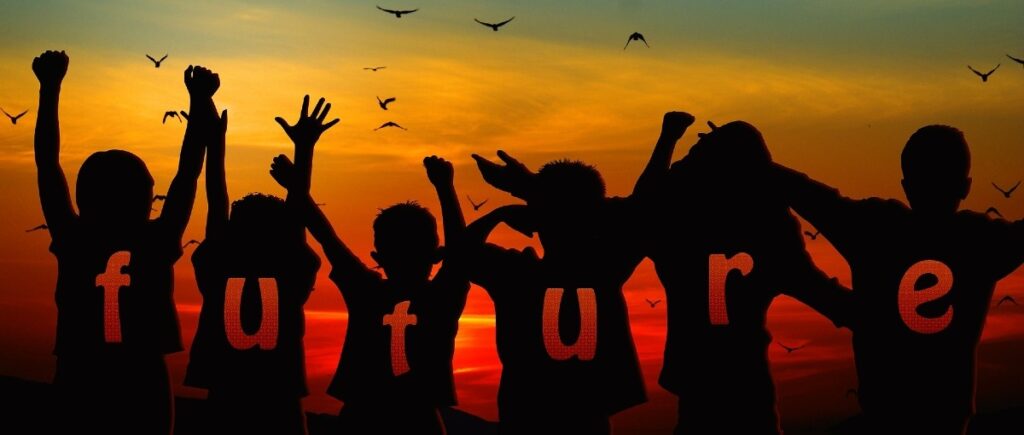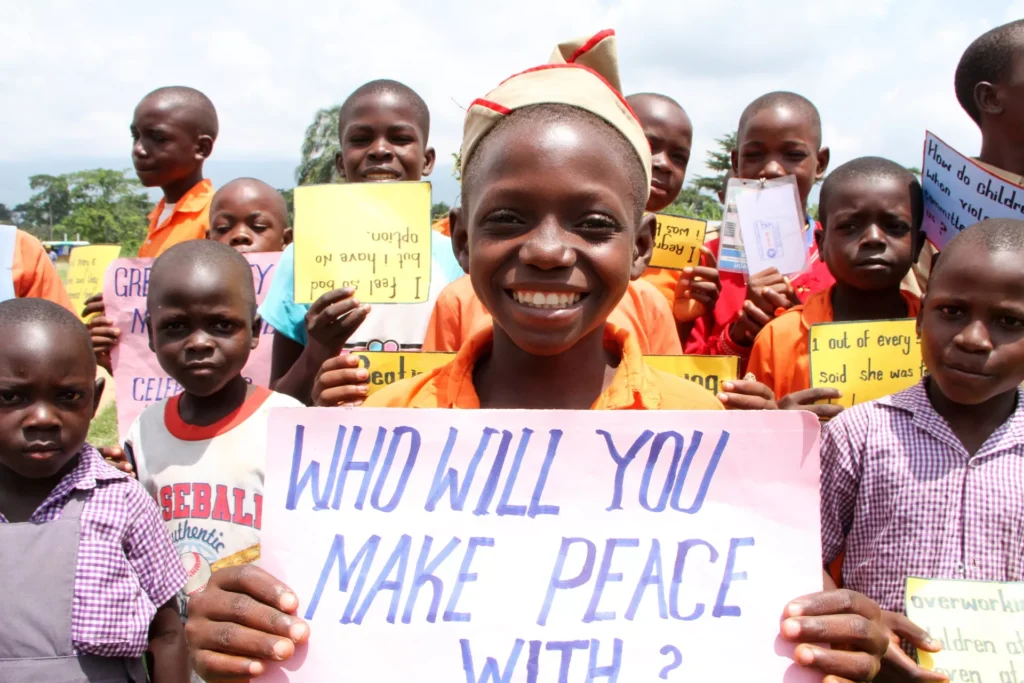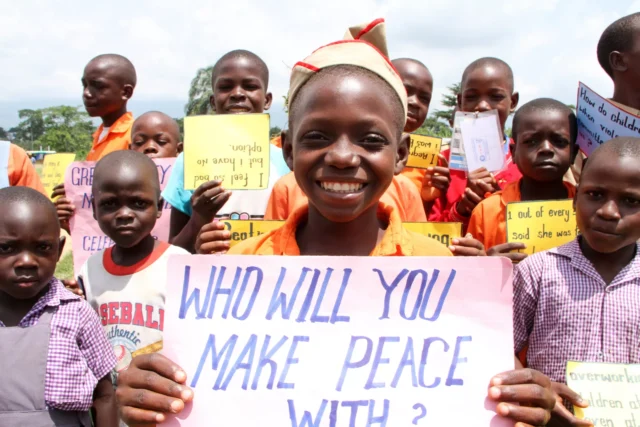On this year’s International Day of Peace, a powerful message is echoing across the globe: if we want peace, if we want stability, if we want dignity for all, then we must act now to ensure education for every child, especially those in crisis.
Table of Contents
The Foundation of Peace
Education is more than a classroom subject; it is the foundation of peace, human dignity, and opportunity. For the 234 million girls and boys living through war, displacement, and long-term crises, it is the one lifeline that gives them hope. These children did not choose war or poverty, but they pay the highest price when schools are destroyed or closed.
Education is proven to reduce violence, strengthen economies, and foster tolerance. A child who learns to read, question, and think critically is more likely to become a citizen who values dialogue over conflict. A girl who completes secondary education is less likely to marry young, more likely to contribute economically, and more likely to raise healthier children.
The link between education and peace is undeniable. Countries where education is denied, especially to girls, face higher risks of instability and conflict. On the other hand, societies that prioritise learning experience greater cohesion and stronger civic responsibility.

A Global Crisis in Numbers
The scale of the education crisis is sobering. According to recent estimates, 85 million crisis-affected children are completely out of school, while another 149 million face serious disruptions in their learning. That is nearly a quarter of a billion children whose futures are at stake.
Girls, refugees, internally displaced children, and children with disabilities are the hardest hit. They face barriers ranging from poverty to cultural discrimination, and in some regions, outright bans on girls attending school.
The economic impact is equally alarming. Studies estimate that educational gaps and high dropout rates cost the world up to US$10 trillion each year. Yet the true cost goes beyond money: it is measured in broken dreams, wasted talent, and weakened communities.
Worse still, the funding gap remains huge. While global military spending continues to rise to record highs, resources for education in emergencies are dangerously inadequate. The irony is painful: the cost of failing to educate children is more than triple the amount being spent on weapons.

Why Urgent Action Is Needed
On this International Day of Peace, leaders are warning that the time for half measures is over. The call to Act Now to Ensure Education for All is not just a slogan—it is an urgent roadmap to global stability.
When children in conflict zones are given a chance to learn, their resilience improves. Education gives them a sense of normalcy, a safe space, and the tools to rebuild their communities. For displaced families, school becomes more than a place of knowledge—it is a sanctuary of hope.
Education also offers societies a chance to heal. By closing gender gaps and ensuring equality, violent conflict can be reduced by more than 30%. That is not just a statistic; it is a proven path to peace.
What Must Be Done
To make education a reality for all, the world must take concrete steps now:
- Increase investment: Governments, private sector players, and philanthropists must significantly raise funding for education in crisis-affected regions.
- Prioritise inclusivity: Support must focus on the most vulnerable—girls, displaced children, refugees, and children with disabilities.
- Strengthen systems: Safe schools, trained teachers, and resilient infrastructure are critical to ensuring learning continues during crises.
- Promote equality: Closing the gender gap in education is essential. Educating girls is one of the most effective ways to break cycles of poverty and prevent future conflict.
- Global coordination: International bodies, NGOs, and governments must work together to deliver lasting solutions and avoid duplication of efforts.
This is not charity—it is an investment in global peace and security. Every dollar spent on education returns many times its value in reduced poverty, improved health, and enhanced stability.

The Choice Before Us
The message is clear: the path to peace runs through the classroom. What we choose today will determine whether millions of children inherit a future of opportunity or one of despair.
The International Day of Peace is more than a symbolic reminder—it is a moral demand. To build a peaceful world, we must act now to ensure education for all. The alternative is a future defined by instability, inequality, and wasted potential.
As one education advocate put it: “Every child we educate is one more voice for peace. Every child we leave behind is one more chance for conflict.”
The time for action is not tomorrow. The time is now.
Join Our Social Media Channels:
WhatsApp: NaijaEyes
Facebook: NaijaEyes
Twitter: NaijaEyes
Instagram: NaijaEyes
TikTok: NaijaEyes
READ THE LATEST EDUCATION NEWS














![Mr Macaroni Drops Blistering Remark: ‘APC Filled with Most Corrupt People’ as He Slams Tinubu’s Controversial Pardon for Criminals=]] Mr Macaroni](https://naijaeyesblog.com/wp-content/uploads/2025/03/Mr-Macaroni-1-1-180x135.avif)

![Chaos Erupts in Abuja Hotel as BBNaija Star Phyna Sparks Fierce Scene Over Alleged N200,000 Dispute [VIDEO] Phyna](https://naijaeyesblog.com/wp-content/uploads/2024/11/A-Picture-of-Phyna-BBNaija-180x135.jpg)























